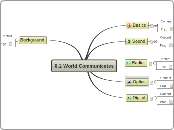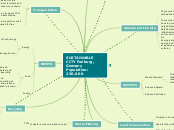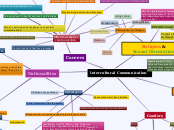8.2 World Communicates
Background
Assumed Knowledge
5.6.1a) identify waves as carriers of energy
5.6.1b) qualitatively describe features of waves including frequency, wavelength and speed
5.6.1c) give examples of different types of radiation that make up the electromagnetic spectrum and identify some of their uses
5.6.4a) distinguish between the absorption, reflection and refraction of light and identify everyday situations where each occurs
5.9.1b) identify that some types of electromagnetic radiation are used to provide information about the universe
5.12a) describe some everyday uses and effects of electromagnetic radiation, including applications in communication technology.
Context
Digital
identify analog to digital conversion situations§ identify data sources, gather, process and present information from secondary sources to identify areas of current research and use the available evidence to discuss some of the underlying physical principles used in one application of physics related to waves, such as:
– Global Positioning System
– CD technology
– the internet (digital process)
– DVD technology
§ identify types of communication data that are stored or transmitted in digital form
Optics
i = r reflection
reflection of EM waves, uses
3 Types of Mirror
refraction - media with different speed
Refractive index - Relative slowness
Snells Law, Relative sin is Relative speed
Optical Fibres
§ perform first-hand investigations and gather information to observe the path of light rays and construct diagrams indicating both the direction of travel of the light rays and a wave front
§ present information using ray diagrams to show the path of waves reflected from:
– plane surfaces
– concave surfaces
– convex surface
– the ionosphere
§ perform an investigation and gather information to graph the angle of incidence and refraction for light encountering a medium change showing the relationship between these angles
§ perform a first-hand investigation and gather information to calculate the refractive index of glass or perspex
§ solve problems and analyse information using Snell’s Law
§ describe and apply the law of reflection and explain the effect of reflection from a plane surface on waves
§ describe ways in which applications of reflection of light, radio waves and microwaves have assisted in information transfer
§ describe one application of reflection for each of the following:
– plane surfaces
– concave surfaces
– convex surfaces
– radio waves being reflected by the ionosphere
§ explain that refraction is related to the velocities of a wave in different media and outline how this may result in the bending of a wavefront
§ define refractive index in terms of changes in the velocity of a wave in passing from one medium to another
§ define Snell’s Law:
§ identify the conditions necessary for total internal reflection with reference to the critical angle
§ outline how total internal reflection is used in optical fibres
Radio
No Medium
Atmosphere Filters
Inverse Square Intensity Drop off
AM FM modulation
Bandwidth limits
§ plan, choose equipment or resources for and perform a first-hand investigation and gather information to model the inverse square law for light intensity and distance from the source
§ analyse information to identify the waves involved in the transfer of energy that occurs during the use of one of the following: Mobile Phone-TV- Radar
§ analyse information to identify the electromagnetic spectrum range utilised in modern communication technologies
§ describe electromagnetic waves in terms of their speed in space and their lack of requirement of a medium for propagation
§ identify the electromagnetic wavebands filtered out by the atmosphere, especially UV, X-rays and gamma rays
§ identify methods for the detection of various wavebands in the electromagnetic spectrum
§ explain that the relationship between the intensity of electromagnetic radiation and distance from a source is an example of the inverse square law:
§ outline how the modulation of amplitude or frequency of visible light, microwaves and/or radio waves can be used to transmit information
§ discuss problems produced by the limited range of the electromagnetic spectrum available for communication purposes
Sound
Sound = pressure wavesPressure waves converted to Transverse wave on CROPitch and AmplitudeEcho LocationSuperpostition § perform a first-hand investigation and gather information to analyse sound waves from a variety of sources using the Cathode Ray Oscilloscope (CRO) or an alternate computer technology
§ perform a first-hand investigation, gather, process and present information using a CRO or computer to demonstrate the principle of superposition for two waves travelling in the same medium
§ present graphical information, solve problems and analyse information involving superposition of sound waves
§ identify that sound waves are vibrations or oscillations of particles in a medium
§ relate compressions and rarefactions of sound waves to the crests and troughs of transverse waves used to represent them
§ explain qualitatively that pitch is related to frequency and volume to amplitude of sound waves
§ explain an echo as a reflection of a sound wave
§ describe the principle of superposition and compare the resulting waves to the original waves in sound
Basics
Waves are manipulated in communication
1D -2D -3D
Mechanical versus Electromagnetic
Wave Features
Particle motion in Transverse and Longitudinal
Wave formulae
Prac
§ perform a first-hand investigation to observe and gather information about the transmission of waves in:
– slinky springs
– water surfaces
– ropes
or use appropriate computer simulations
§ present diagrammatic information about transverse and longitudinal waves, direction of particle movement and the direction of propagation
§ perform a first-hand investigation to gather information about the frequency and amplitude of waves using an oscilloscope or electronic data-logging equipment
§ present and analyse information from displacement-time graphs for transverse wave motion
§ plan, choose equipment for and perform a first-hand investigation to gather information to identify the relationship between the frequency and wavelength of a sound wave travelling at a constant velocity
§ solve problems and analyse information by applying the mathematical model of v=fxlambda to a range of situations
§ perform a first-hand investigation and gather information to analyse sound waves from a variety of sources using the Cathode Ray Oscilloscope (CRO) or an alternate computer technology
§ perform a first-hand investigation, gather, process and present information using a CRO or computer to demonstrate the principle of superposition for two waves travelling in the same medium
§ present graphical information, solve problems and analyse information involving superposition of sound waves
Content
§ describe the energy transformations required in one of the following:
– mobile telephone
– fax/modem
– radio and television
§ describe waves as a transfer of energy disturbance that may occur in one, two or three dimensions, depending on the nature of the wave and the medium
§ identify that mechanical waves require a medium for propagation while electromagnetic waves do not
§ define and apply the following terms to the wave model: medium, displacement, amplitude, period, compression, rarefaction, crest, trough, transverse waves, longitudinal waves, frequency, wavelength, velocity
§ describe the relationship between particle motion and the direction of energy propagation in transverse and longitudinal waves
§ quantify the relationship between velocity, frequency and wavelength for a wave:









